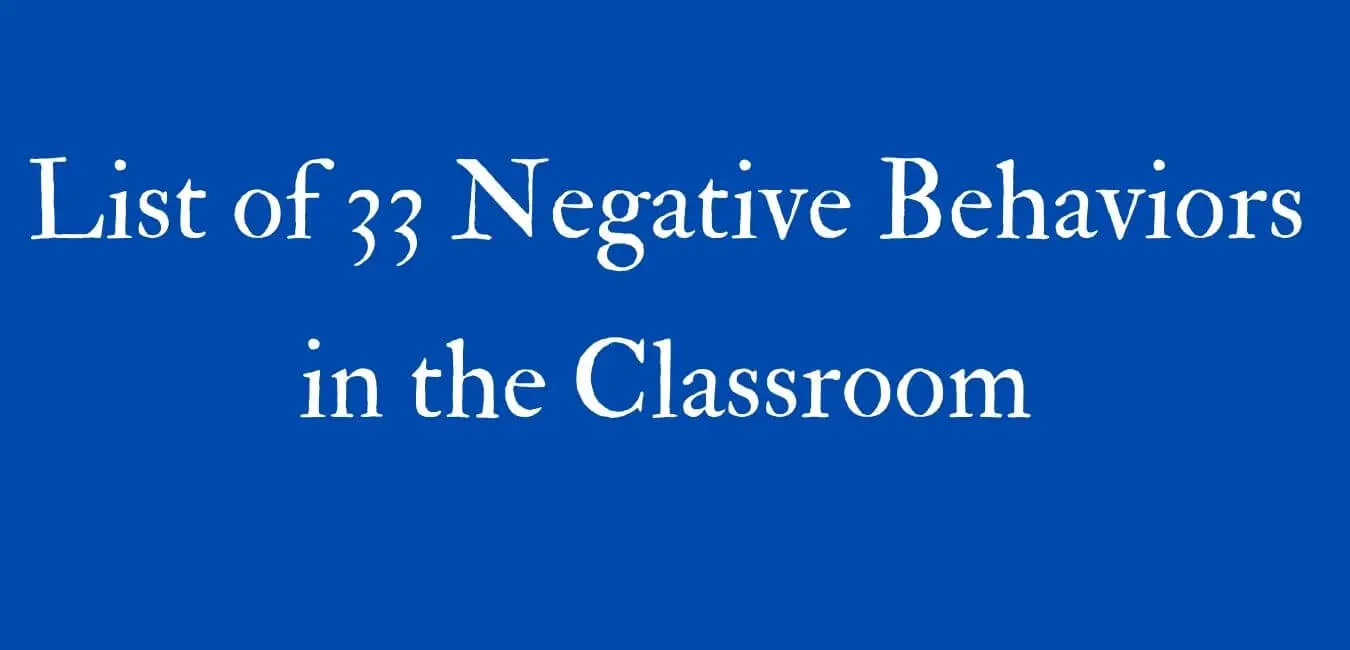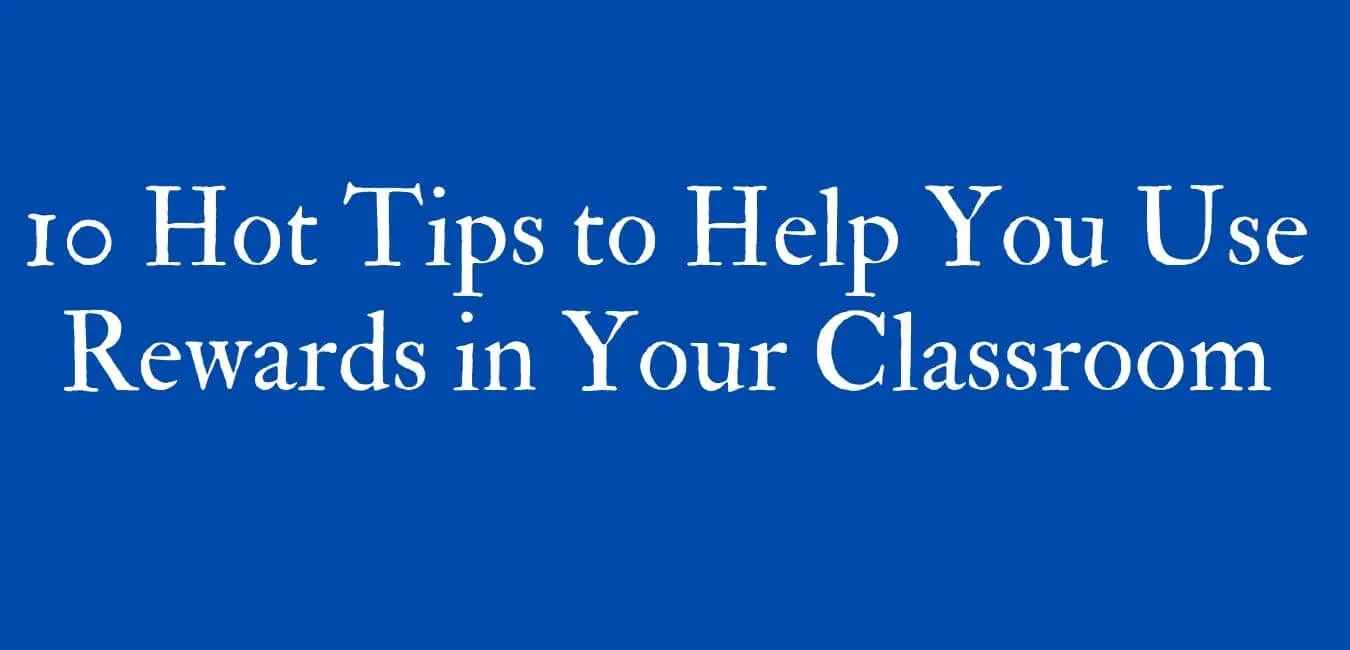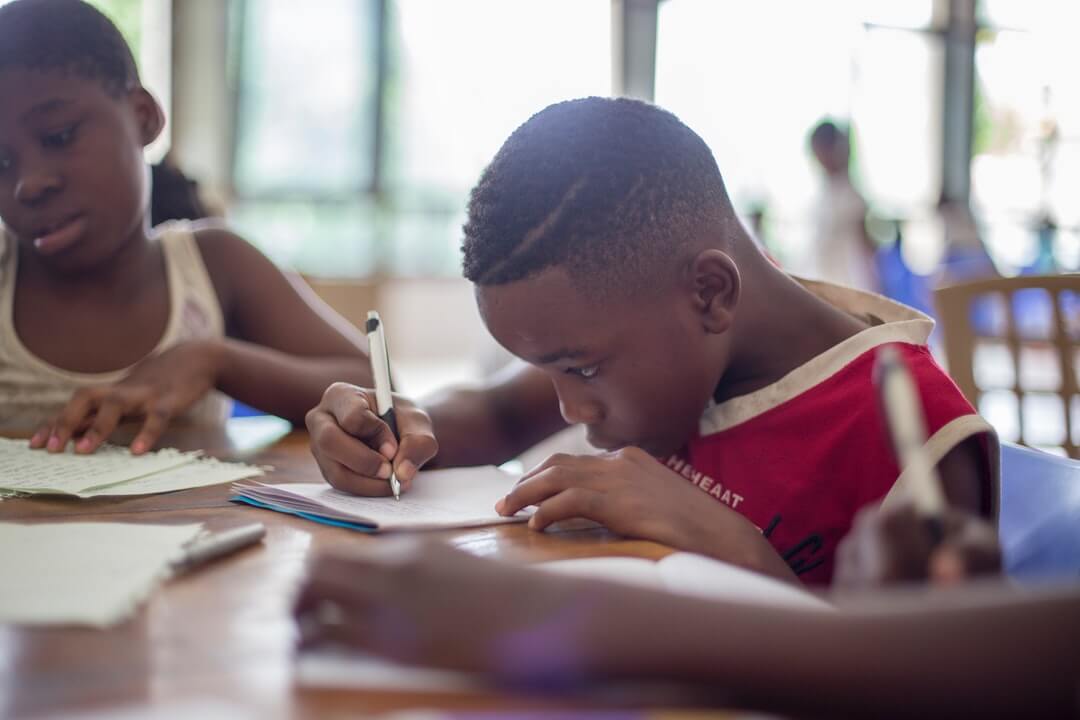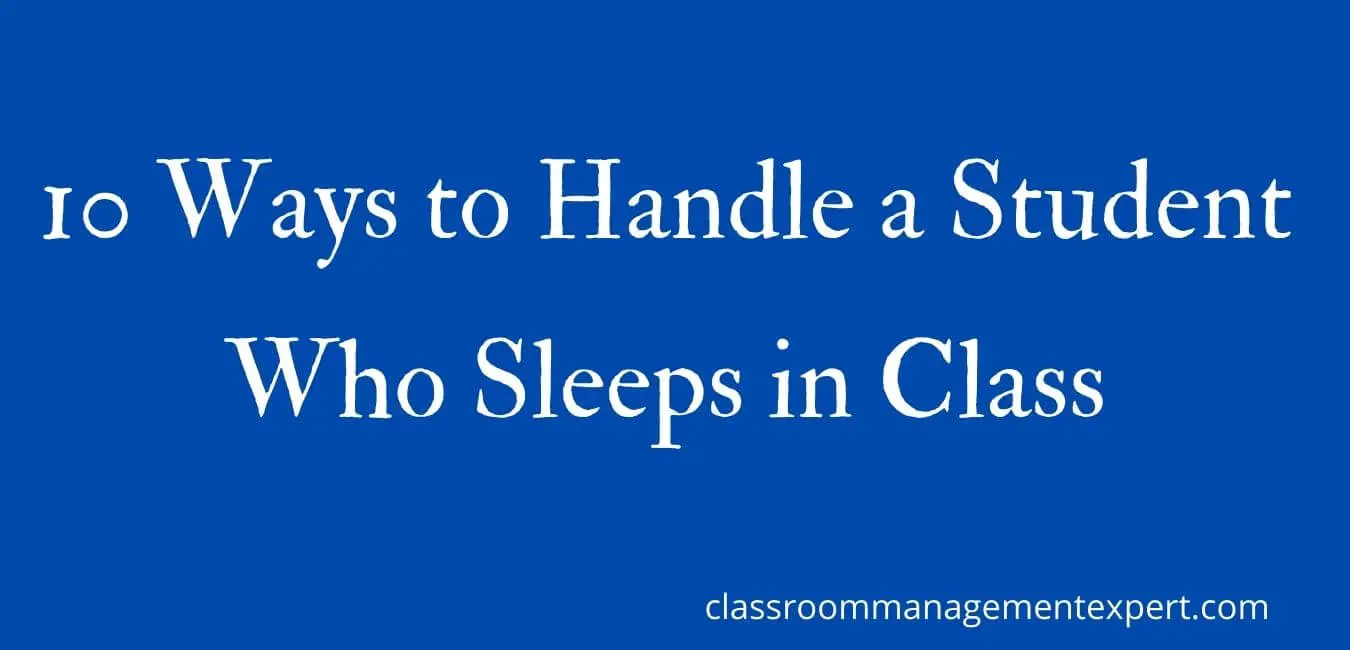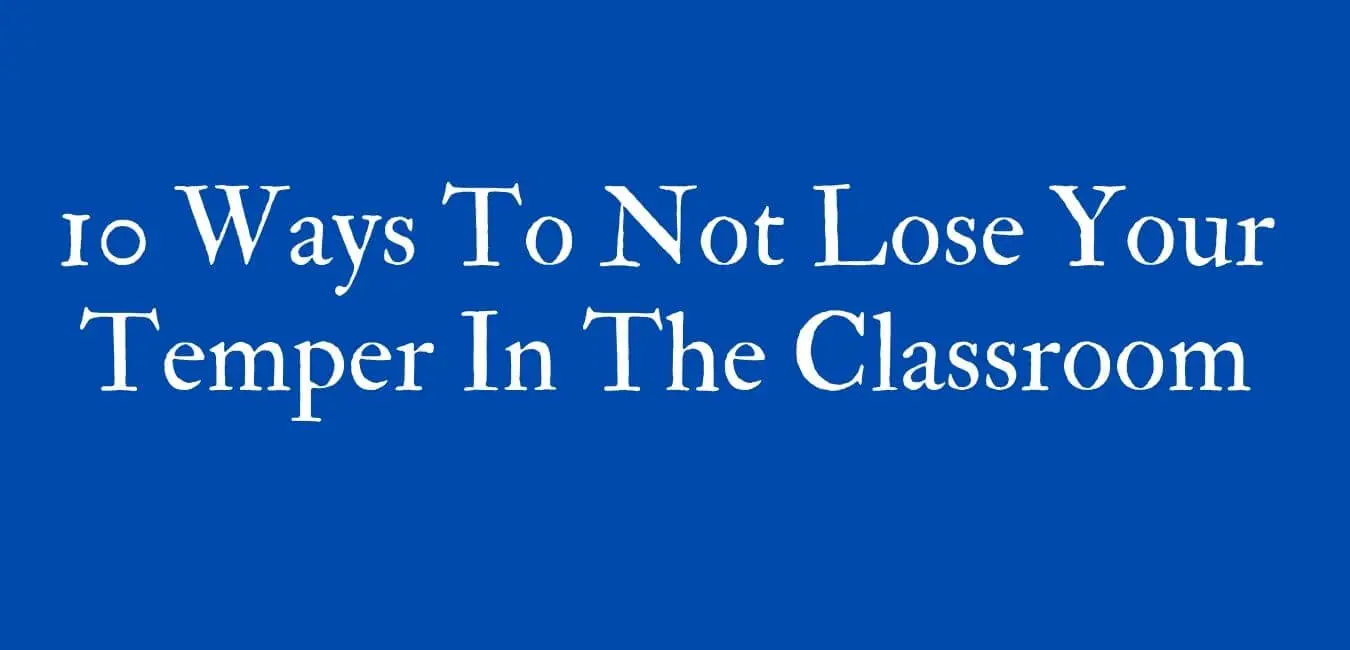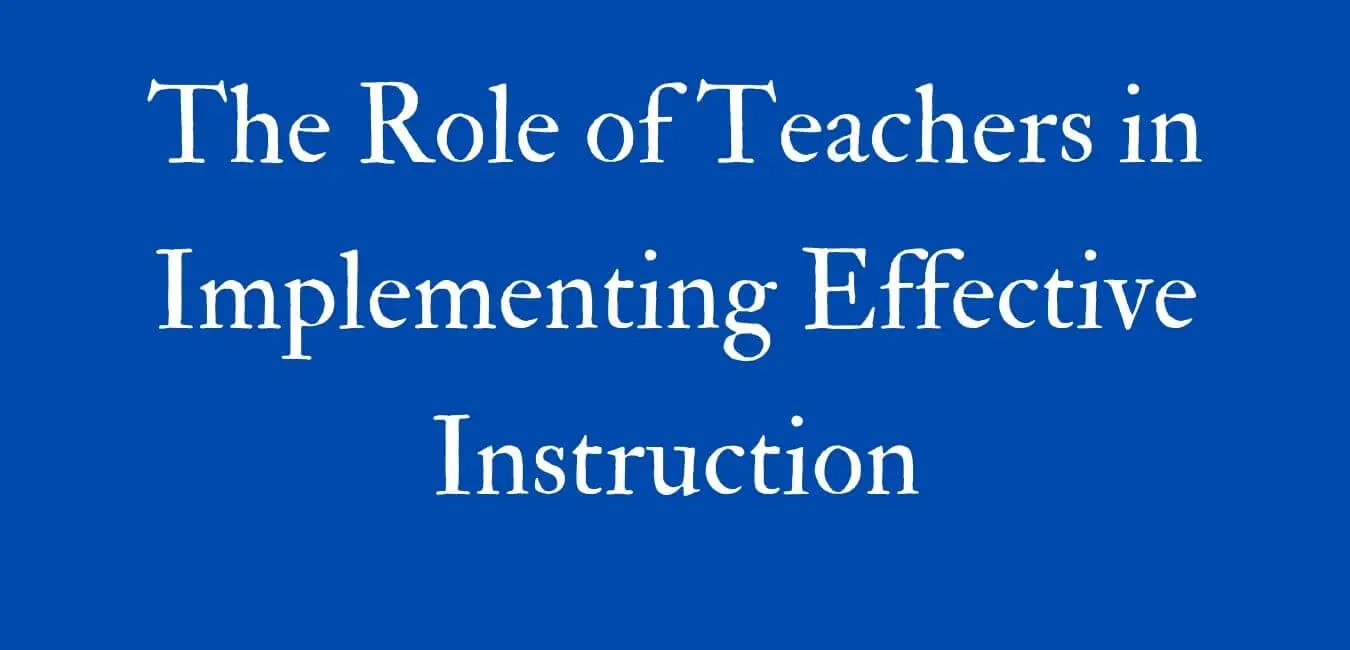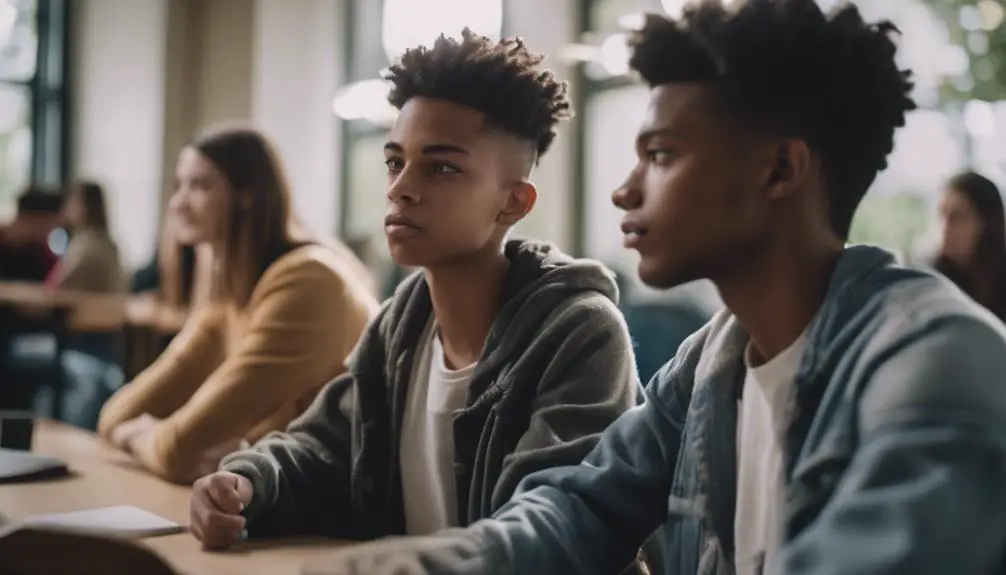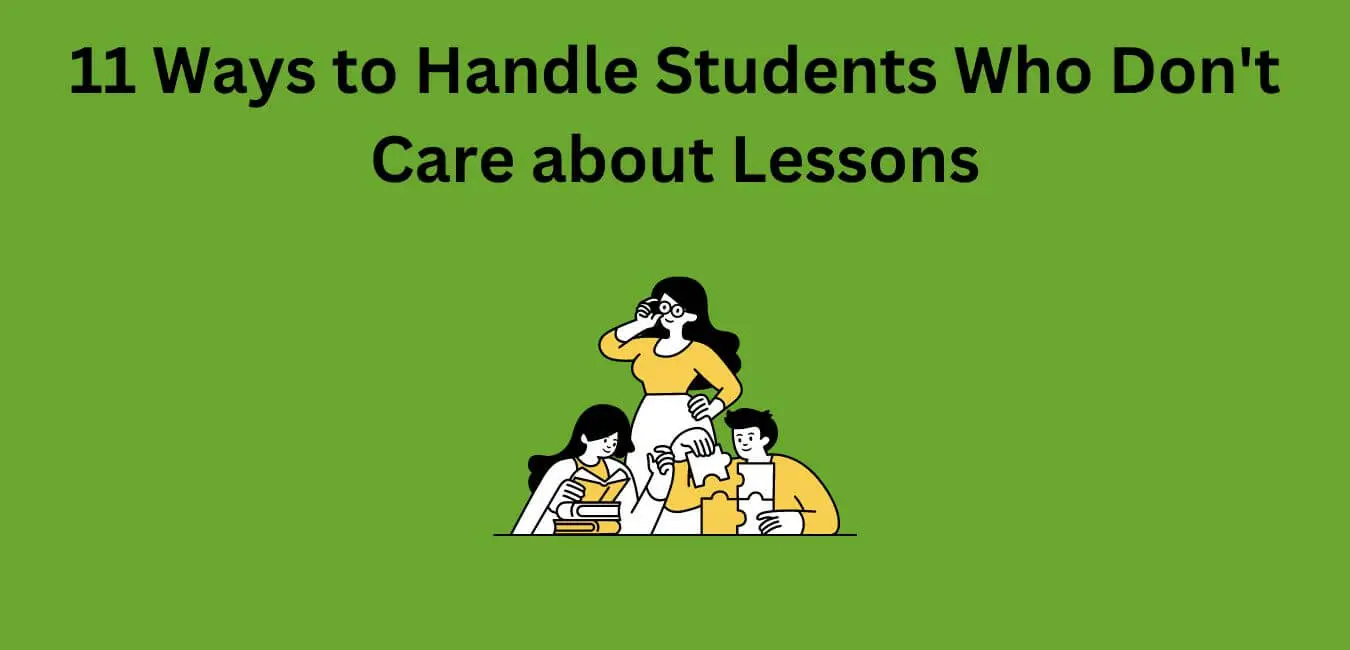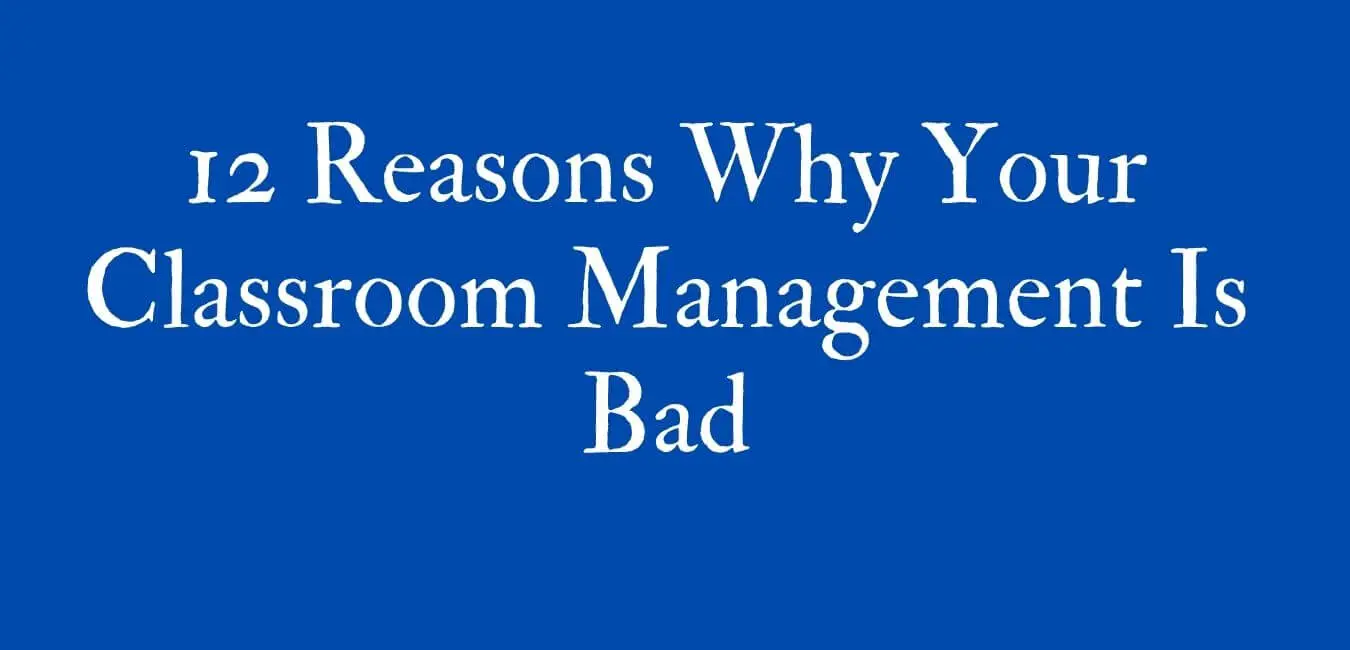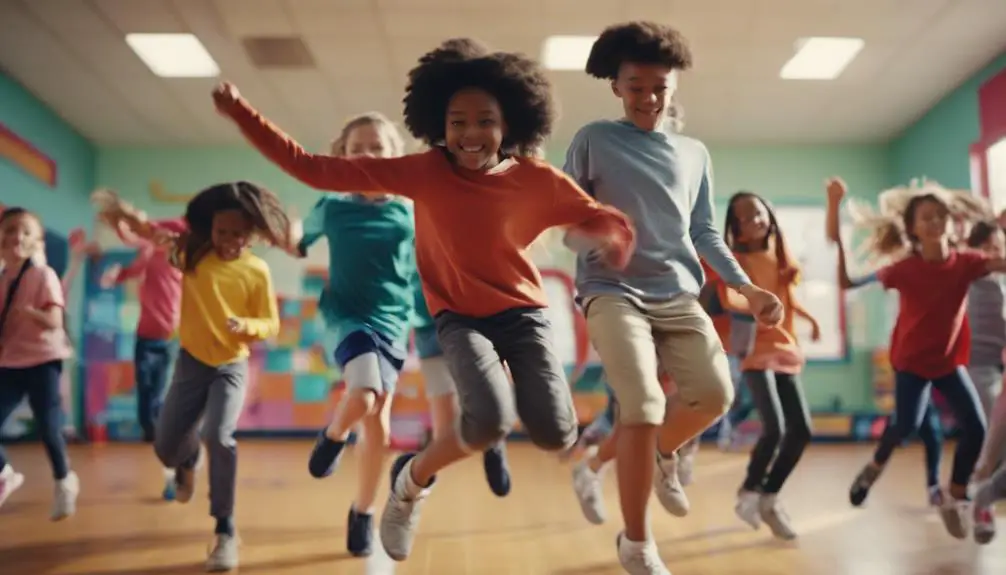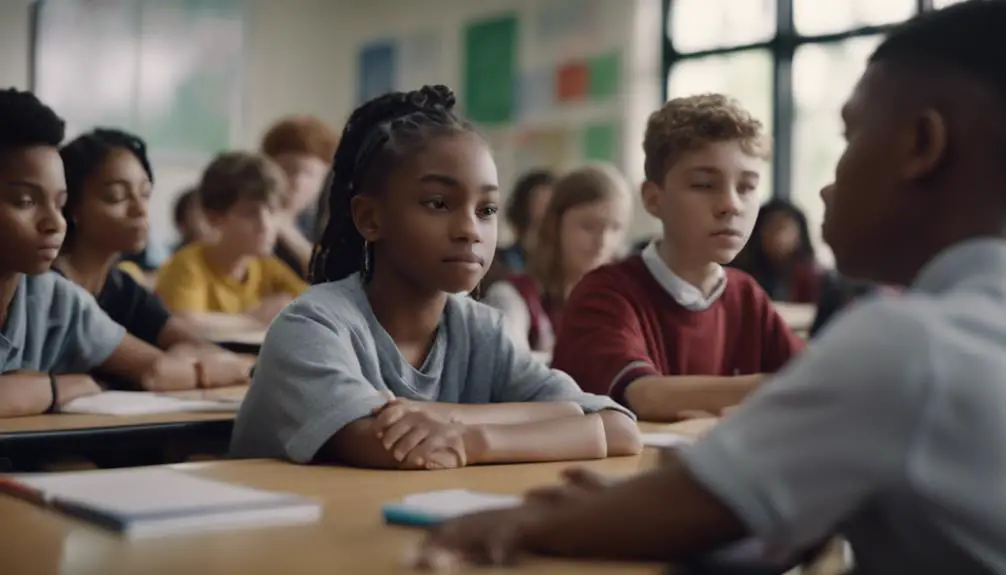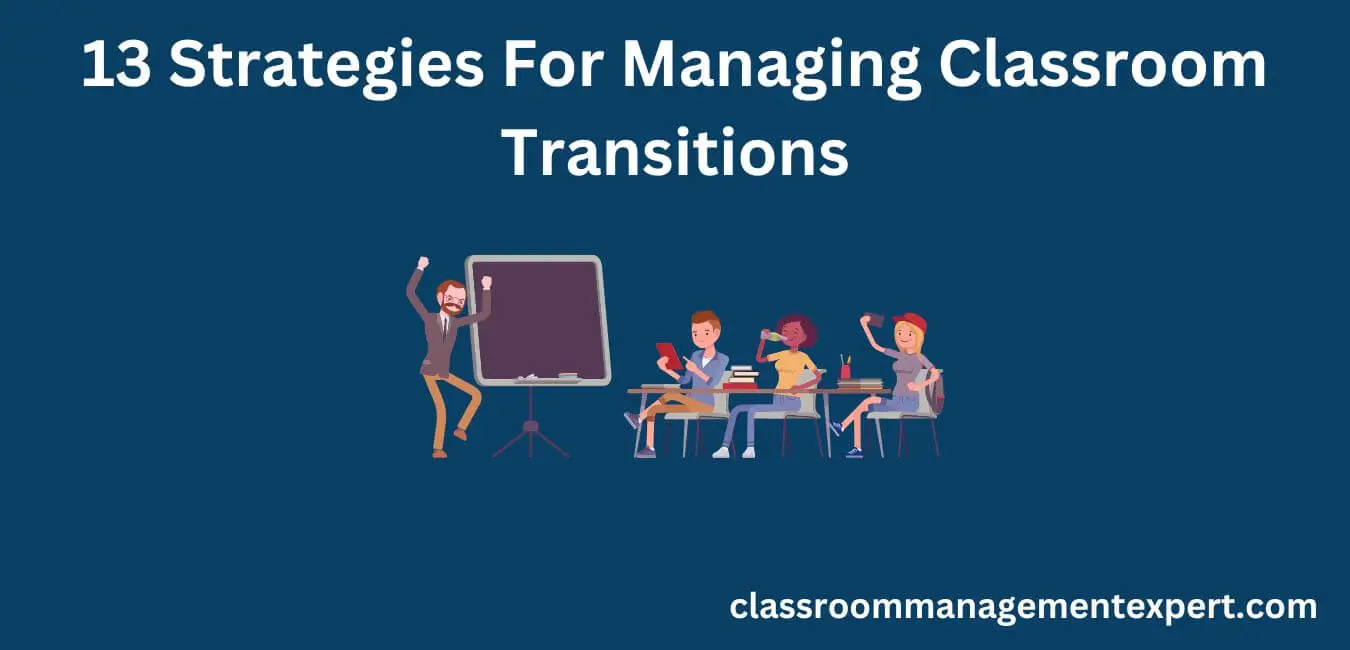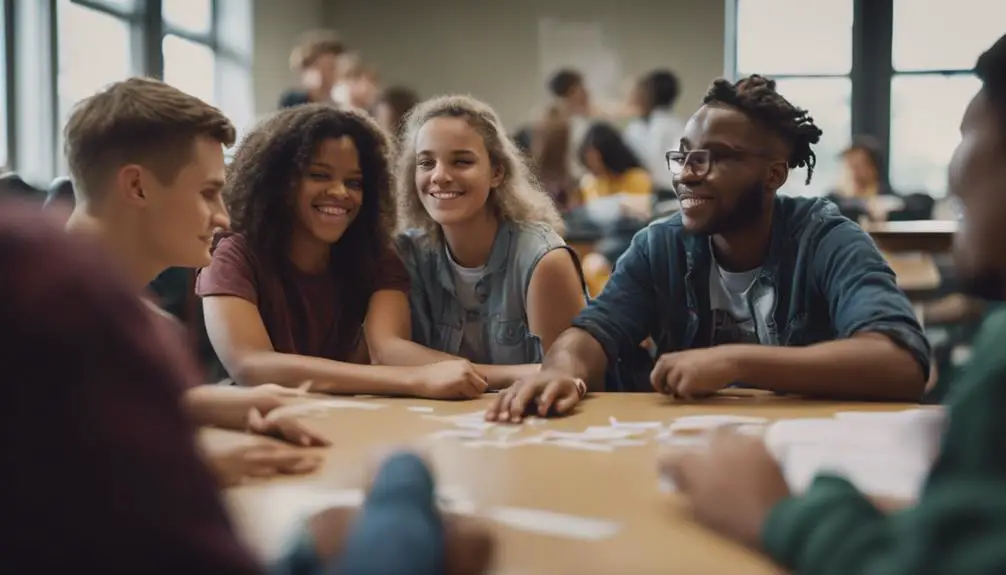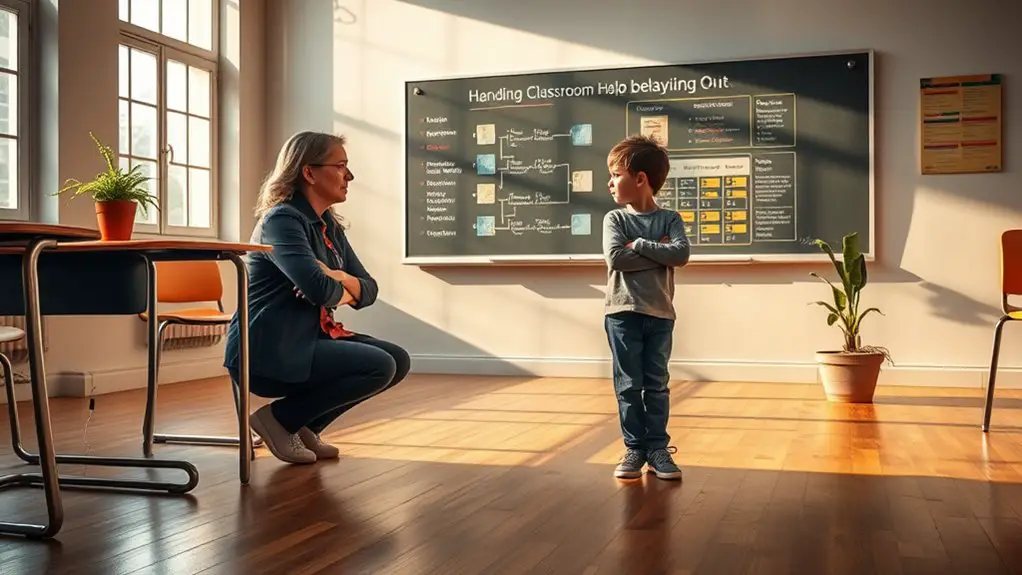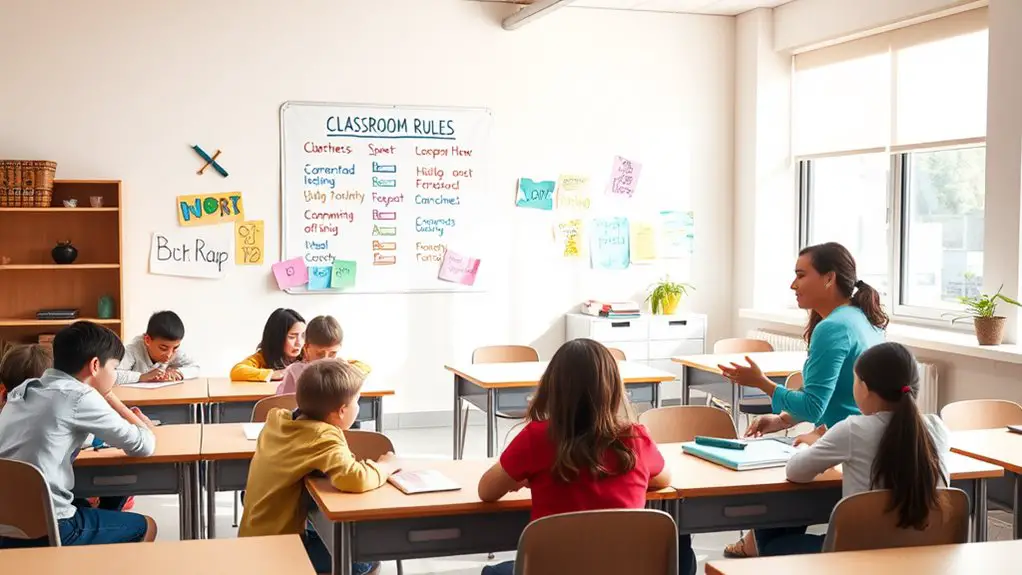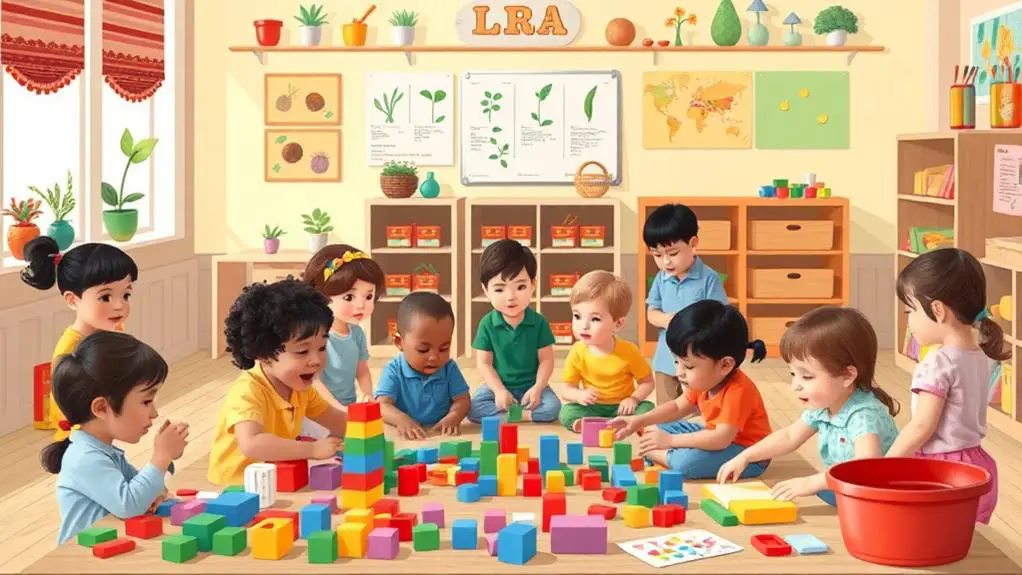The classroom should be a conducive environment for teaching and learning. However, several negative behaviors can make the classroom a less productive place for both teachers and students.
Some of these negative behaviors are cheating, swearing, fighting, mocking others, stealing, and many more. Identifying them can help teachers create a safe and positive learning environment for both teachers and students.
In this post, we will explore some negative behaviors of students that can hamper the positive environment of the classroom.
The 33 Most Common Negative Behaviors in the Classroom
The following are some of the common behavior problems in the classroom:
1. Talking Out of Turn
This is one of the most common disruptive behaviors in the classroom. When students speak without being called on, it interrupts the flow of the lesson and can confuse or distract others.
- Solution: Implement a hand-raising system and ensure every student understands the importance of waiting for their turn to speak. Click here for strategies to manage classroom interruptions.
2. Cheating
Cheating can manifest in several ways, from copying another student’s work to using unauthorized materials during an exam. This behavior not only undermines the integrity of the learning process but also sets students up for failure in the long run.
- Solution: Create a culture of honesty by discussing the importance of academic integrity. Use seating arrangements and proctoring techniques to minimize opportunities for cheating. Check out tips for handling cheating in your classroom.
3. Swearing
Inappropriate language can cause discomfort, disrupt the learning atmosphere, and negatively influence classroom relationships.
- Solution: Establish clear rules regarding language use and enforce consequences for breaking those rules.
4. Fighting
Physical or verbal altercations create a hostile and unsafe environment for everyone involved.
- Solution: Intervene immediately and use conflict resolution strategies. In severe cases, escalate the matter to school authorities. Find out more about handling fights in your classroom.
5. Gossiping
Talking behind someone’s back and spreading rumors can damage students’ self-esteem and create a toxic classroom atmosphere.
- Solution: Promote a culture of respect, trust, and open communication. Discourage gossip and encourage students to resolve differences in a respectful manner.
6. Making Noise
Excessive noise, whether from talking, whispering, or using devices, can distract others and make it hard for everyone to focus.
- Solution: Set strict noise rules and designate specific times for group work or discussions. Enforce quiet times during instruction or independent work.
7. Ignoring Others
When students ignore their peers or teacher, it creates a breakdown in communication, leading to feelings of isolation for some students.
- Solution: Encourage collaboration through group projects and activities that promote inclusivity.
8. Mocking Others
Mocking or ridiculing others can severely damage a student’s self-esteem and affect their ability to focus and participate in class.
Solution: Implement strong anti-bullying policies and create a supportive environment where differences are respected.
9. Not Following Rules
Failure to adhere to classroom rules, such as talking out of turn or not completing assigned work, can lead to disorder and disrupt the learning process.
- Solution: Consistently enforce classroom rules and hold students accountable when they break them.
10. Physical Fighting
In addition to verbal disputes, physical fights can break out between students, making the classroom feel unsafe and unproductive.
- Solution: Enforce a strict no-violence policy and intervene swiftly to deescalate the situation.
11. Smoking
Smoking on school premises is not only illegal in many places but also poses a health risk to everyone involved.
- Solution: Clearly ban smoking and work with school authorities to strictly enforce this rule.
12. Poor Hygiene
A lack of proper hygiene can lead to discomfort among students and sometimes illness.
- Solution: Teach students about hygiene and enforce rules that promote cleanliness.
13. Being Loud and Disruptive
Disruptive behavior, such as shouting or engaging in attention-seeking actions, can disturb the class and reduce learning time.
Solution: Use seating arrangements, proximity control, or specific classroom management techniques to calm disruptive students.
14. Not Working or Studying Hard
Lack of effort or engagement in class is a common issue. Students may become lazy, distracted, or simply uninterested in the subject matter, leading to lower grades and a disruptive atmosphere for others.
- Impact: Students who do not apply themselves may fall behind in their studies, affecting their academic performance. This behavior can also discourage others and reduce overall class participation.
- Solution: Motivate students by connecting the material to their interests. Offering additional support, such as tutoring, can also help. Setting achievable goals and celebrating small successes can encourage a stronger work ethic.
15. Refusing to Help Others
Refusal to help classmates or contribute to group activities can create tension and a lack of cooperation in the classroom. Students who consistently choose not to assist others may isolate themselves and contribute to a less inclusive learning environment.
- Impact: Fosters isolation and weakens peer-to-peer learning. Group work suffers when some students do not contribute, and it diminishes teamwork and collaboration.
- Solution: Encourage collaborative activities that promote peer support and assign roles in group tasks to ensure participation. Teach the value of cooperation and how helping others can enhance their own learning experience.
16. Theft
Stealing is a serious issue that undermines trust in the classroom. This includes taking other students’ belongings or even copying their work without permission.
- Impact: Theft can cause conflicts, reduce the sense of safety, and breed distrust among classmates.
- Solution: Educators should create clear rules regarding ownership and respect for others’ property. When theft occurs, address the situation immediately, ensuring the student understands the consequences and works to rebuild trust. Read more about handling theft in the classroom.
17. Swearing (Repeated Behavior)
Swearing or the use of inappropriate language is a recurrent issue in some classrooms. It can create an unpleasant environment and affect classroom morale.
- Impact: Disrupts class dynamics and may cause discomfort among students, lowering the overall quality of the learning environment.
- Solution: Establish and consistently reinforce rules against offensive language. Hold students accountable for inappropriate behavior by applying appropriate consequences, such as a verbal warning or detention.
18. Making Fun of Others (Repeated Behavior)
Mocking or making fun of classmates due to their appearance, behavior, or abilities is another form of bullying. This behavior can severely harm the self-esteem and emotional well-being of the victim.
- Impact: Bullying creates a hostile environment and can lead to long-term emotional and psychological harm for the victim. It may also disrupt the classroom and lead to conflicts among students.
- Solution: Educators should take a firm stance against bullying. Introduce anti-bullying programs, educate students on the harm caused by bullying, and provide support to both victims and perpetrators. Encourage empathy and foster an inclusive environment where differences are respected.
19. Assault
Physical or verbal assault in the classroom is a severe issue that creates a dangerous and hostile environment. Whether it is hitting, pushing, or threatening someone, assault disrupts the educational process and can lead to serious consequences.
- Impact: Physical violence in the classroom not only endangers the safety of students but also undermines the teacher’s authority and affects the emotional well-being of everyone involved.
- Solution: Immediate intervention is required to de-escalate the situation. Schools should have a zero-tolerance policy for assault, involving school authorities or parents if necessary. Implement conflict resolution programs to address underlying issues.
20. Chewing Gum
Chewing gum during class might seem trivial, but it can become disruptive, especially when students are careless with their gum. It can be distracting to other students, create a mess, or lead to inappropriate behavior, such as sticking gum under desks.
- Impact: Distracts students and dirties the classroom, causing unnecessary disruptions during lessons.
- Solution: Implement a clear “no gum” policy, explaining to students why it’s necessary to maintain a clean and focused learning environment. Reinforce consequences for breaking this rule.
21. Sleeping in Class
Some students tend to fall asleep during lessons, which could be a result of boredom, fatigue, or disengagement. Sleeping in class affects their ability to absorb information and causes them to miss important learning moments.
- Impact: Sleeping students miss out on instruction and may fall behind academically. It can also be disruptive and set a bad example for other students.
- Solution: Encourage active participation by making lessons engaging and interactive. If a student regularly falls asleep, investigate the root cause (such as lack of sleep, health issues, or stress) and address it accordingly.
22. Profanity
Using offensive or obscene language in class is a sign of disrespect and can make others feel uncomfortable. It may also contribute to a hostile or negative environment.
- Impact: Lowers the respect level in the classroom, makes others uncomfortable, and can escalate into more serious disruptions.
- Solution: Clearly communicate that profane language is not acceptable. Set clear consequences for using inappropriate language, and ensure students understand the impact of their words on others.
23. Vandalism
Some students engage in vandalism by damaging school property, writing graffiti, or defacing materials in the classroom. This behavior not only disrupts the learning environment but also shows a lack of respect for shared resources.
- Impact: Vandalism creates a disrespectful and chaotic environment, costing the school both time and money to repair damage.
- Solution: Teach students to take pride in their school and respect communal property. Hold students accountable for their actions by making them participate in the cleanup or repair of any damage caused.
24. Eating in Class
While eating may seem harmless, it can become a distraction, especially when it leads to noise or mess in the classroom. Food can also attract pests and create unsanitary conditions.
- Impact: Eating during class can disrupt others and make it difficult for the teacher to maintain control, especially when it leads to littering or other distractions.
- Solution: Establish a no-eating policy during class unless there are special circumstances (e.g., medical reasons). Designate break times for students to eat and make sure everyone follows the rules.
25. Excessive Talking in Class
Talking during lessons can be distracting to other students and makes it hard for the teacher to deliver their lesson effectively. It can also encourage others to join in, creating a noisy and unproductive environment.
- Impact: Excessive talking can lead to a noisy, unstructured class where students struggle to stay focused on the material.
- Solution: Use classroom management techniques such as assigning seats, giving warnings, or even implementing a “silent period” when students can refocus.
26. Inappropriate Dressing
Inappropriate clothing, whether too revealing or against the school dress code, can cause distractions in the classroom. It may also lead to peer judgment or teasing.
- Impact: Clothing that is not suitable for school disrupts learning, leading to distractions and even conflicts among students.
- Solution: Enforce the school dress code consistently. Educate students on why dressing appropriately is important for maintaining a respectful and focused learning environment.
27. Making Threats
Verbal or physical threats create fear in the classroom, making students feel unsafe. This behavior can lead to escalated violence and disrupt the sense of security essential for learning.
- Impact: Threatening behavior puts everyone on edge, interferes with learning, and may escalate into physical violence.
- Solution: Treat all threats seriously and take immediate action. Notify school authorities and parents, and offer counseling or intervention to address the root cause of the behavior.
28. Using Cell Phones
The use of mobile phones in class, whether for texting, gaming, or browsing the internet, is one of the most common distractions in modern classrooms. It can severely hinder students’ concentration and lead to cheating.
- Impact: Cell phone use can be distracting, lower academic performance, and encourage off-task behavior.
- Solution: Implement a strict no-phone policy during class hours. You can allow phones only for educational purposes, and even then, ensure they are used responsibly.
29. Belligerence
Belligerence refers to students becoming openly hostile or confrontational towards their peers or teachers. This behavior disrupts the classroom environment and makes it difficult for the teacher to maintain control.
- Impact: Belligerent behavior can escalate into fights or emotional distress for others and undermines the teacher’s authority.
- Solution: Address hostile behavior immediately. Calmly diffuse the situation and, if necessary, involve school counselors or administrators to help the student manage their emotions more effectively.
30. Being Unprepared
Students who come to class unprepared, without homework, textbooks, or other necessary materials, slow down the progress of the class and can derail the lesson plan.
- Impact: When students are unprepared, they fall behind in their studies, making it difficult for the teacher to move forward with the lesson.
- Solution: Set clear expectations for preparedness, and give consequences for failing to bring necessary materials. Offer gentle reminders and organizational tips to help students prepare better.
31. Insubordination
Insubordination occurs when students refuse to follow a teacher’s instructions or openly challenge authority. This defiance can quickly spread to other students, leading to widespread discipline problems.
- Impact: Insubordination undermines the teacher’s authority and can result in classroom chaos if not addressed quickly.
- Solution: Establish clear consequences for insubordination and consistently enforce them. At the same time, try to understand why the student is acting out and address any underlying issues.
32. Bullying
Bullying takes many forms, from physical aggression to verbal abuse and social exclusion. It creates a toxic classroom atmosphere where students feel unsafe and unwelcome.
- Impact: Bullying can have serious long-term effects on the mental health and academic performance of victims.
- Solution: Implement a zero-tolerance policy for bullying. Educate students on the consequences of bullying and create a culture of empathy and inclusivity.
33. Laughing at Inappropriate Times
Laughing at inappropriate times, such as during serious discussions or while a teacher is talking, can be disruptive and disrespectful to both the teacher and other students.
- Impact: This behavior can create an atmosphere of disrespect and may encourage others to misbehave as well.
- Solution: Gently correct this behavior by reminding students of the appropriate times to laugh and how their actions affect others. Create a culture of respect and attentiveness.
34. Getting Out of the Seat Without Permission
Some students leave their seats without permission, which can disrupt the flow of the lesson and interfere with the teacher’s ability to maintain control of the class.
Solution: Clearly establish rules about when students can leave their seats, and enforce these consistently. Allow for short breaks or movement activities to keep students engaged and reduce the desire to leave their seats.
Impact: Getting up without permission can lead to a chaotic classroom where students do not respect boundaries or rules.
Summary of the 33 Most Common Negative Behaviors in the Classroom
Here are the most common negative behaviors that disrupt the classroom environment:
| Negative Behavior | Impact on Learning Environment | Possible Solutions |
|---|---|---|
| 1. Talking out of turn | Interrupts class flow, hinders others from speaking | Enforce speaking rules, use hand-raising system |
| 2. Cheating | Undermines academic integrity, affects future performance | Promote academic honesty, monitor exams |
| 3. Swearing | Creates hostility, disrupts focus | Set strict language policies |
| 4. Fighting | Creates unsafe environment, distracts from learning | Immediate intervention, conflict resolution |
| 5. Gossiping | Damages relationships, spreads rumors | Promote respect, discourage gossip |
| 6. Making noise | Interferes with concentration, disrupts lessons | Establish quiet time, monitor noise levels |
| 7. Ignoring others | Isolates students, harms communication | Foster collaboration, encourage participation |
| 8. Mocking others | Lowers self-esteem, creates exclusion | Enforce anti-bullying rules |
| 9. Not following rules | Causes chaos, distracts others | Reinforce rules, apply consequences |
| 10. Physical fighting | Leads to injury, unsafe classroom | Set clear anti-violence policies |
| 11. Smoking | Health hazard, disturbs others | Prohibit smoking, enforce bans |
| 12. Poor hygiene | Causes discomfort, spreads illness | Teach hygiene, promote cleanliness |
| 13. Being loud and disruptive | Interrupts lessons, hard to focus | Enforce participation rules |
| 14. Not working or studying hard | Low performance, disrupts class morale | Provide guidance, encourage effort |
| 15. Refusing to help others | Hinders teamwork, fosters isolation | Encourage peer support, promote collaboration |
| 16. Theft | Erodes trust, creates tension | Create clear rules, take immediate action |
| 17. Swearing (Repeated) | Creates negativity, lowers class morale | Immediate corrective action |
| 18. Making fun of others (Repeated) | Reduces confidence, excludes others | Address bullying, establish strict policies |
| 19. Assault | Promotes violence, creates fear | Zero tolerance for violence, involve authorities |
| 20. Chewing gum | Distracts class, dirties environment | Ban gum in class, enforce consequences |
| 21. Sleeping | Leads to disengagement, missed learning opportunities | Encourage participation, address sleep issues |
| 22. Profanity | Creates a disrespectful environment | Enforce language standards |
| 23. Vandalism | Damages property, disrupts learning | Hold students accountable for damage |
| 24. Eating in class | Distracts others, disrupts lesson flow | Enforce no-eating policies, except with permission |
| 25. Excessive talking | Interrupts lesson, distracts others | Set clear rules for speaking |
| 26. Inappropriate dressing | Causes distraction, disrupts focus | Enforce dress code |
| 27. Making threats | Creates fear, disrupts safety | Take threats seriously, involve authorities |
| 28. Using cell phones | Distracts students, disrupts focus | Prohibit phone use during class |
| 29. Belligerence | Promotes hostility, difficult to manage | Enforce respect, handle calmly |
| 30. Being unprepared | Lowers class progress, disrupts lesson flow | Encourage organization, hold students accountable |
| 31. Insubordination | Undermines authority, disrupts order | Use discipline to reinforce respect |
| 32. Bullying | Damages emotional health, creates exclusion | Strict anti-bullying policies, encourage reporting |
| 33. Laughing at inappropriate times | Disrupts learning, makes others uncomfortable | Set clear behavior expectations |
| 34. Leaving seat without permission | Disrupts the class, undermines teacher’s authority | Require students to request permission to move |
Why Should You be Prepared for the Negative Behaviors in Your Classroom
Negative behaviors in the classroom pose a challenge to effective teaching and learning. Being prepared to handle these behaviors is essential to maintaining a productive environment. When teachers anticipate issues and have strategies in place, they can better manage disruptions and minimize their impact.
Key Preparation Tips:
Develop a Behavior Management Plan: Be ready with specific interventions for different types of disruptive behaviors.
Establish Clear Expectations: From day one, communicate rules and expectations to the students.
Remain Consistent: Enforce rules fairly and consistently to prevent confusion.
Be Proactive: Address issues early before they escalate into bigger problems.
Maintain Open Communication: Encourage students to share their concerns or issues, creating a respectful and supportive environment.
Conclusion
From the above, there are many negative behaviors you will encounter in your classroom. Therefore, you must be prepared to deal with them both proactively and as they occur. Assess your situation and use the strategies that work for you and your students. You can find more strategies in our articles. Be sure to check them out here.

